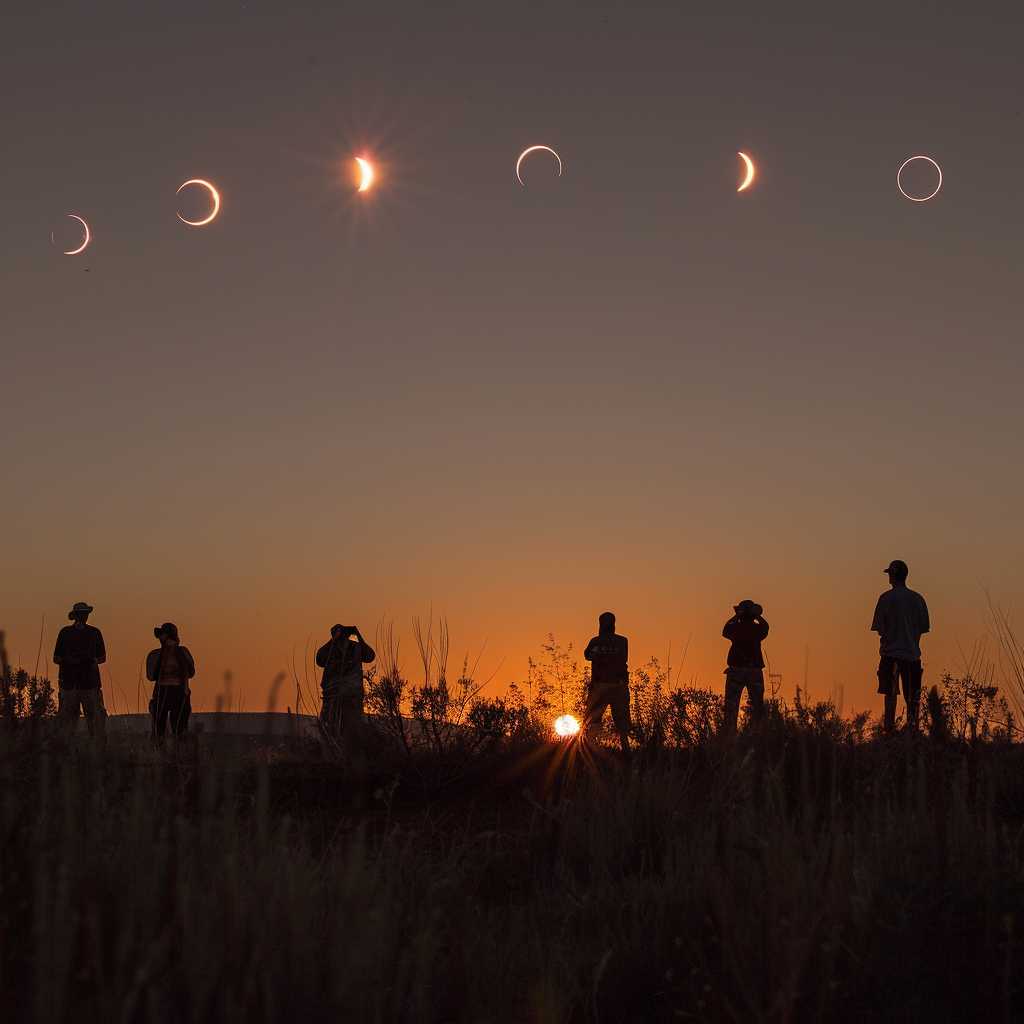Understanding Solar Eclipses: Celestial Dynamics and Human Fascination
Solar eclipses have fascinated humans throughout history. These celestial events occur when the Moon passes between the Sun and Earth, temporarily obscuring the Sun’s light. Depending on the alignment, a solar eclipse can be total, partial, or annular. This article meticulously explores the mechanics of solar eclipses, their historical significance, and the contemporary scientific understanding of these spectacular events.
The Science of Solar Eclipses
Solar eclipses are awe-inspiring astronomical events that arise due to the interplay between the Sun, Moon, and Earth. The type of eclipse experienced on Earth depends on various factors such as the distance of the Moon from Earth, its orbital path, and its alignment with the Sun.
Total Solar Eclipses
During a total solar eclipse, the Moon completely covers the disc of the Sun as witnessed from certain areas on Earth. When this precise alignment happens, those within the confines of the Moon’s umbra (the central shadow where sunlight is fully blocked out) experience a brief period of daytime darkness. Observers can often see a phenomenon known as “Baily’s beads,” which are the tiny spots of light created when sunlight filters through lunar valleys. As totality ends, a diamond ring effect may also be visible around the Moon’s silhouette.
Partial Solar Eclipses
A partial eclipse occurs when only part of the Sun is obscured by the Moon. Viewed from Earth, it appears as though a dark shadow has taken a bite out of the Sun. The Moon’s penumbra (the partial shadow where sunlight is not completely blocked) casts these shadows, offering varying degrees of coverage depending on an observer’s location.
Annular Solar Eclipses
An annular eclipse happens when the Moon is too far from Earth to fully obscure the Sun, leaving a bright outer ring of sunlight visible at maximum phase; this is known as “the ring of fire.” The path where an annular eclipse can be observed is called an antumbra.
Historical Importance and Mythological Interpretations
Cultures around the world have attached significant mythological and supernatural meanings to solar eclipses. They have been interpreted as potent omens, symbolizing anything from divine disfavor to impending natural disasters.
Ancient Interpretations
In ancient China, a solar eclipse was thought to be a dragon consuming the Sun, while in Viking mythology, they believed wolves were responsible for chasing and catching the Sun or Moon. Many ancient cultures developed sophisticated methods to predict eclipses using astronomy knowledge that was remarkably advanced for their time.
Solar Eclipses in Modern Times
Today’s scientific community understands that eclipses have no supernatural significance but remains focused on engaging with these events primarily for educational and research purposes. Eclipses provide unique conditions for observing the solar corona — the Sun’s outermost layer — which is usually obscured by glare but becomes visible during totality.
Solar Eclipse Safety and Observation
To safely observe a solar eclipse without causing damage to one’s eyesight is critical as looking directly at the Sun can result in severe eye injury. specialized eclipse glasses that are ISO certified can allow people to view an eclipse safely.
Safe Viewing Practices
Opt for indirect ways of observing like pinhole cameras or use special solar observatory tools like telescopes equipped with appropriate filters that block harmful infrared and ultraviolet light.
The Path of Totality and Traveling for Eclipses
Eclipse chasers travel worldwide to view total eclipses within their designated path of totality where this astronomical event can be fully experienced.
Scientific Research During Solar Eclipses
For scientists, solar eclipses present valuable opportunities for studying solar odyssey aspects usually difficult to observe, such as solar flares, corona pattern changes, and stars in proximity to the eclipsed area.
Coronal Studies
Eclipse observations help astronomers refine their understanding of solar wind and space weather both relevants for understanding magnetic field distribution and protecting satellite technology.
Exploring Gravity’s Effects
It’s also posited that solar eclipses provide conditions for experiments examining general relativity effects such as gravitational lensing – which can lead to better understanding massive objects’ influence on spacetime.
